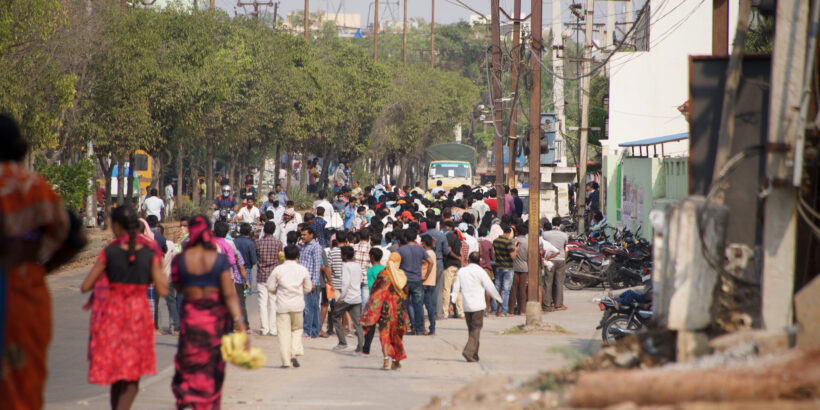India is used to heavy rains between June and September, which is considered the rainy season and when most of South Asia’s annual rainfall occurs. Unfortunately, monsoons in the area are becoming more severe and frequent, a likely consequence of warming global temperatures. Recent record-breaking heavy rains have caused deadly flooding and landslides in northern India and parts of New Delhi, forcing the evacuation of thousands of people and damaging roads, homes, and infrastructure.
A perfect storm
Outside of the initial devastation from the rains, the severe flooding in India has created conditions ripe for waterborne disease transmission. The floodwaters overwhelmed multiple water treatment plants, reducing the supply of safe water. In New Delhi, there was a risk of drinking water shortages due to the destruction from the floods. Overwhelmed water sources can be contaminated with bacteria like typhoid. When people are unable to access safe water, this raises their risks for contracting these illnesses.
Additionally, individuals displaced by the flooding were forced to move to temporary shelters, which during a natural disaster are overcrowded and unlikely to be connected to safe water and sanitation services. These conditions can also facilitate the spread of typhoid. Pakistan experienced similar severe flooding last year that displaced millions, increasing their waterborne illness risk.
Guarding against the health impacts of future climate events
Climate change-related events are posing increasing threats to human health. Extreme weather events are becoming more common, unpredictable, and severe. While we may not know where or when the next flooding event will happen, we do know that more are likely. It is important to take steps now to mitigate infectious disease risks when these natural disasters do occur.
Typhoid conjugate vaccines (TCVs) are highly effective at preventing typhoid. They can be given to children as young as six months and provide strong and durable protection for more than 4 years. Routine immunization with TCVs is a powerful tool to prevent typhoid, keeping kids protected against typhoid once vaccinated. It’s also one less thing to worry about when natural disasters like floods strike and typhoid risk increases.
India, which has one of the highest typhoid burdens in the world, plans to introduce TCV into their routine immunization system. This is a great step toward protecting millions of children from this disease. TCV can protect children and communities now while more long-term solutions such as improved water and sanitation (WASH) infrastructure that can withstand these climate events are implemented. Ultimately, an integrated approach that combines TCVs with WASH improvements is the best way to comprehensively reduce typhoid burden and protect communities as they experience ongoing extreme weather events.
Photo: A stock photo of a group of people in Hyderabad, India



